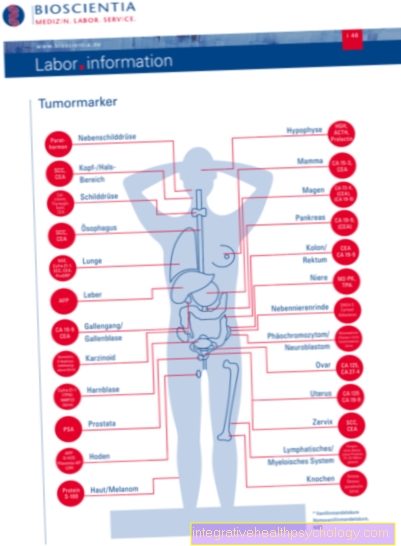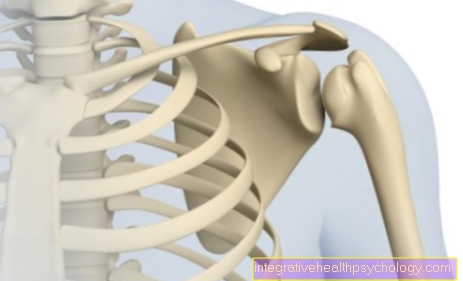Sore finger joints
introduction
Finger joint pain can have a wide variety of causes.
The pain can be the result of a traumatic injury or it can be chronic.
In order to have pain in the finger joint, the bone does not necessarily have to be affected. Different injuries are prevalent depending on the age group.

causes
The causes of pain in the finger joint can have different causes.
Pain in the finger joints can result from injuries during sports. For example, by overstretching the capsular apparatus that surrounds the finger joint. The finger joint is then often swollen and overheated.
For a similar reason, the finger can even break near the joint, which is also expressed in pain. The first, sharp pain is followed by a dark, long pain that is often perceived as dull. The stabbing pain can come back again and again as soon as the injured finger joint is touched.
Disregarding the traumatic events, chronic diseases that affect the whole body can also trigger pain in the finger joint.
One of these diseases is rheumatoid arthritis, an autoimmune reaction that causes inflammation in the joints.
Another cause of pain in the finger joints can be osteoarthritis, which due to degenerative changes, especially in old age, leads to remodeling and degradation processes in the finger joints and thus triggering pain.
Read more on the topic: Dislocation of a finger joint.
The so-called Raynaud's syndrome can cause pain in the fingers, but the joints are not directly affected. This usually results in a painful fading of the fingers after exposure to the cold. As the process progresses, the fingers become bluish due to a lack of oxygen in the fingers. The fingers may then, but not always, turn red. This is due to the fact that the fingers are now supplied with more blood in order to ensure a sufficient supply of oxygen. Raynaud's syndrome can occur without a known cause, but it can also appear as a side effect of other diseases such as inflammation of the blood vessels (vasculitis) or as a side effect of drugs such as beta blockers.
Another cause of painful finger joints can be Dupuytren's disease. Due to an unknown cause, a tendon plexus grows in the palm of the hand (palmar aponeurosis) and this leads to an increased contracture of the flexor muscles of the fingers.
Often this occurs on both hands. The contracture causes pain and the fingers are restricted in movement.
Sudeck's disease can rarely occur after trauma to the hand. Pain continues to occur after a fracture, for example, although the healing process has already been completed. The nerves are not demonstrably damaged, but there is still severe pain, hypersensitivity in the affected area and movement restrictions. If the pain persists after trauma to the fingers or the hand after healing, a doctor should be consulted who can relieve the pain with pain reliever therapy.
Pain in the finger joints after a fall
Structures in the hand can be injured by falling with blunt force on the fingers.
The joint capsules, tendons and bones of the finger joints are primarily affected. If the finger is visibly misaligned, there is a high probability that a bone fracture is present.
If the finger is overstretched, the tendons and the joint capsule can be pulled or torn. Immediate immobilization, elevation, compression and cooling are the first therapeutic steps after a fall.

I would be happy to advise you!
Who am I?
My name is dr. Nicolas Gumpert. I am a specialist in orthopedics and the founder of .
Various television programs and print media report regularly about my work. On HR television you can see me every 6 weeks live on "Hallo Hessen".
But now enough is indicated ;-)
In order to be able to treat successfully in orthopedics, a thorough examination, diagnosis and a medical history are required.
In our very economic world in particular, there is too little time to thoroughly grasp the complex diseases of orthopedics and thus initiate targeted treatment.
I don't want to join the ranks of "quick knife pullers".
The aim of any treatment is treatment without surgery.
Which therapy achieves the best results in the long term can only be determined after looking at all of the information (Examination, X-ray, ultrasound, MRI, etc.) be assessed.
You can find me at:
- Lumedis - orthopedics
Kaiserstrasse 14
60311 Frankfurt am Main
Directly to the online appointment arrangement
Unfortunately, appointments can only be made with private health insurers. I ask for understanding!
Further information about myself can be found at Lumedis - Dr. Nicolas Gumpert
Overuse as a cause of pain in the finger joints
If the joints are stressed too much, pain can occur. It is usually not possible to differentiate whether the joint is directly affected or the surrounding tissue such as ligaments and tendons.
The overload manifests itself in the affected joints as pain, swelling, restricted mobility, stiffness or tenderness. With osteoarthritis, too, pain in the joints can occur if they are overstrained.
A doctor should therefore be consulted if pain occurs in the joints when moving so that osteoarthritis can be excluded.
Causes of pain in the finger joints in the morning
Pain that is particularly severe in the morning and after long periods of inactivity suggests a chronic joint disease.
The most common causes of morning pain are osteoarthritis and rheumatoid arthritis. Typically, those affected describe a feeling of stiffness in the finger joint. This is accompanied by slight pain when trying to move. In addition, there are weaknesses and, in the long term, unsightly, externally visible changes in the finger joints.
Arthrosis very often affects the end joints of the fingers, less often the metatarsophalangeal joints.
It is a chronic disease that can begin in adolescence. It cannot be cured and is difficult to treat. At most, the progression of the disease can be stopped.
In the process, the entire cartilage of the joint and the articular surfaces is broken down. Since the cartilage is insensitive, osteoarthritis is often only noticed when the bones rub against each other.
Sometimes the disease can become so severe that it is no longer possible to close your fist after getting up in the morning. It takes up to an hour in the morning for the fingers to move reasonably. The painful handshake in the morning is very typical. This often turns out to be torture for those affected.
Find out all about the topic here: Pain in the interphalangeal joints.
Causes of pain in the finger joints at night
Pain in the finger joints at night often occurs with a late form of osteoarthritis. It is a non-inflammatory disease of the articular cartilage. Osteoarthritis often occurs in older patients as a wear and tear or when the joints are severely overloaded. Joint misalignments favor the development of osteoarthritis.
In addition to the finger joints, all other joints in the body - for example the hip or knee joint - can also be affected. Late osteoarthritis often results in restricted movement so that the fingers can no longer be fully stretched or bent. Patients at this stage are often already being treated. If this is not the case, a specialist (rheumatologist) should be consulted.
Heavy water retention can occur during pregnancy. Joints can therefore also hurt here. The complaints occur especially at night when the body is at rest, the joints are not moved and the metabolism is down. The water is more difficult to remove and can cause increased pain.
Thyroid dysfunction
The thyroid gland can also be responsible for joint pain when it is dysfunctional.
If the thyroid cannot produce enough hormones, this is called an underactive thyroid (hypothyroidism). The lack of hormones can lead to early joint wear. In addition, cartilage calcifications can develop. The symptoms in the joints then resemble those of osteoarthritis.
Other symptoms that can indicate an underactive thyroid are weight gain, feeling cold, tired, water retention and aching limbs.
Gout as a cause of sore finger joints
Gout is a very painful condition affecting the fingers and toes. Most of the gout occurs in acute attacks. These are the deposits of small crystals that form from uric acid in the blood. Everyone has certain amounts of uric acid in their blood because uric acid is a breakdown product of various molecules, including human DNA.
The acid is normally dissolved in the blood and is harmless as long as a certain amount is not exceeded. The amount of uric acid in the human blood can increase if the body regulates incorrectly or if there is an improper diet.
The symptoms of an acute gout attack are typical symptoms of inflammation. Severe pain in the finger joint occurs together with reddening, restricted mobility, overheating and swelling in the joint. Uric acid levels can rise from foods such as legumes, certain types of meat, and alcohol. Initially, the level can be lowered by changing one's diet, but the drug "Allopurinol" may have to be prescribed.
Rheumatism as a cause of painful finger joints
Rheumatism is often a chronic and painful change in the bones and joints.
Rheumatic diseases of the joints in particular often affect the finger joints. Rheumatoid arthritis is often found in the joints, which is an acute non-infectious inflammation of the joints that often affects several joints at the same time.
Polyarthritis is when more than 5 joints are affected.
Arthritic changes in the finger joints are also common, especially in older people. This is also a rheumatic disease. It is associated with long-term wear and tear on the articular cartilage, which in the long term leads to painful degeneration of the joint.
Heberden osteoarthritis as a cause of painful finger joints
Different forms of osteoarthritis can be found on the finger joints. They differ mainly in their causes and accompanying symptoms. The duration also plays a role.
Heberden's osteoarthritis appears to appear for no specific reason, which is called "idiopathic". It is believed that genetic factors can have an influence. It develops slowly and steadily and is found in the pronounced form almost only in old age, for example in women after the menopause. For inexplicable reasons, the cartilage of the joints near the fingertips dies without being inflamed.
Bouchard osteoarthritis as a cause of pain in the finger joints
Bouchard osteoarthritis is less common than Heberden's osteoarthritis. Their formation is very similar and just as unexplained. It often arises on the finger joints, which are located closer to the wrist. Several joints are often affected at the same time, which is why it is also known as "finger polyarthrosis".
Psoriatic arthritis
Psoriasis is a skin disease called "psoriasis". Psoriasis is an autoimmune disease that causes typical redness and flaking on the skin. Furthermore, as a so-called "systemic disease", psoriasis can cause numerous other comorbidities.
Among other things, it can affect the joints as psoriatic arthritis and cause joint inflammation there. Typically the end and middle joints of the fingers and toes are affected, and less often the spine or knees.In addition, tendons, muscles, ligaments and cartilage of the wrists, hands and fingers can be affected and cause considerable pain. Furthermore, there is restricted movement and, in the long term, stiffness and cartilage wear of the fingers.
For more information, see: Psoriatic arthritis
Pain in the finger joints, especially when it is cold
A pain in the finger joints that is aggravated by cold is very typical in rheumatic diseases. In cold seasons, those affected not only have to struggle with pain, but also with increased mobility restrictions and stiffness of the joints.
Another, but very rare, disease is Raynaud's syndrome. In the case of acute pain in the fingers when it is cold, it must be taken into account. This is a vascular disease that causes involuntary contractions and spasms of the blood vessels. In the cold, this clinical picture can be acutely triggered, whereby the blood supply to the fingers is interrupted for short intervals.
Pain in the finger joint with no swelling
With swelling, there is an increased accumulation of fluid in the tissue or the joint cavity. The fluid can be a simple increase in synovial fluid, but also blood or pus. An effusion with an outwardly visible swelling indicates an acute event in the finger, for example active bleeding, inflammation or irritation. The swelling is only an accompanying symptom, can cause additional pain and even delay healing.
However, if the finger is injured or inflamed, there is no need for swelling. Injury and damage can also be present if there is no visible swelling. To prevent swelling, the finger should be cooled, spared and elevated. This can prevent minor bleeding and inflammation, which can also reduce swelling.
Menopause as a cause of sore finger joints
The time of menopause brings many hormonal changes in the body with it.
Before menopause, the increased estrogen largely protects against symptoms such as gout.
After menopause, gout can occur more favorably. Gout is a metabolic disease that is associated with inflammation of the joints. On the other hand, rheumatic diseases such as rheumatoid arthritis or osteoarthritis also often occur after menopause. The exact reason for the development of these diseases is not known, but the estrogen also has an influence on the formation of synovial fluid. If this subsides, the joints suffer more from every single movement.
Pressure as a cause of pain in the finger joints

Pressure-dependent pain can be felt mainly in acute injuries and in the healing process. An injury or inflammation leads to the accumulation of inflammatory cells around the affected area. The blood circulation is increased at this point and the inflammatory cells cause a significant sensitization of the pain receptors of the finger. Even light external pressure can irritate the receptors in such a way that a sharp pain arises.
Bruising of the bone can also be accompanied by swelling and severe pressure-dependent pain.
In many cases, the therapy consists only of pain relief and waiting. It is different with fractions. These are also associated with pressure-related pain, but often require further therapy, for example immobilization.
Can it be MS (Multiple Sclerosis)?
MS is an autoimmune inflammatory disease in which nerve insulation is broken. The disease often begins in phases with impaired vision and sensitivity. Areas of the body that are far away from the trunk are particularly affected early. For this reason, tingling, paralysis and pain can occur early on, especially in the feet and hands. The finger joints can also hurt due to muscle cramps.
Find out more about the topic: multiple sclerosis
What role does hyperacidity play in pain in the finger joints?
In the body there is a balance of acids and bases. Different equilibria must exist in different areas for the physiological processes of the body to run. These are measured as the pH value. In the blood there is an average pH value of 7.4, whereas in the stomach there is a very low and therefore very acidic pH value of 1. If this pH shifts below 7.4, symptoms can develop in the joints. Maintaining this pH value is vital, as many body processes depend on it, which is why there are numerous natural buffer systems in the body that maintain this value.
It is not possible to change this value significantly and over-acidify the body through behavior and diet. However, the body's own uric acid that circulates in the blood can be influenced by diet and behavior. An increase in uric acid does not lead to over-acidification of the tissue, but small uric acid crystals can be deposited in the joints and lead to the clinical picture of "gout". This can also occur on the finger joints and lead to very painful seizures. Rheumatism, for example, can be made worse by a drop in pH.
What role does the joint capsule play in pain in the finger joints?
The joint capsule plays an important role in joint function. It completely surrounds the joint with an inner and outer layer. The joint is stabilized and protected by additional straps in the capsule. Inside the capsule, a lubricating fluid is produced that lubricates the joint space.
When the capsule ruptures, parts of the joint's function are usually restricted. Often, important tendons and ligament structures that can move the joint are carried away. In addition, a capsule tear is very painful in most cases.
Pain in the finger joints after alcohol
Pain in the fingers after drinking alcohol does not necessarily have to be related to the two facts. However, if you notice that after just a few glasses of alcohol a sharp pain begins in the finger joint, this can be the first indication of gout. Alcohol increases uric acid levels and can acutely cause uric acid levels in the blood to rise.
Small uric acid crystals can fall out in the joint and cause a very painful attack. This causes the joint to become inflamed and swollen. With certain medications, the value can be lowered quickly so that the symptoms soon subside. A recurring pain after drinking alcohol indicates small latent attacks of gout and requires a doctor's investigation. In the long term, the focus is on a controlled diet to lower uric acid levels.
Concomitant symptoms
The accompanying symptoms can vary with the cause of the pain in the finger joint. Together, in certain combinations, they can provide important information on diagnosis. A dull pain after an injury can be accompanied by swelling, reddening, overheating and limited mobility. In the case of bone fractures, misalignments, so-called “dislocations” of the fingers, can also be noticed.
Chronic complaints can also lead to permanent symptoms such as stiffness. A painful and noisy flexion of the fingers is not uncommon in osteoarthritis. In addition, nodules can be seen on the finger. In addition, there is an increasing weakness and a loss of mobility.
Swelling of the finger joints
Swelling occurs especially after acute injuries. The swelling is triggered by an effusion of fluid into the surrounding soft tissue.
In most cases it is an effusion of blood and lymph. After trauma, for example torn eyes, overstretched fingers, joint capsule tears, bruises and fractures of the bones, small tears can appear in the surrounding blood and lymph vessels. The fluid then escapes and pours into the joint cavities, causing swelling and redness. In order to counteract such an injury-related swelling, the bleeding must be stopped as quickly as possible by compression and cold.
In other cases, swelling of the fingers can occur due to water retention, so-called "peripheral edema". This type of swelling is common in heart disease or elderly patients. Water escapes from the blood through the vessels into the surrounding tissue. These effusions can also be stopped by external compression and even treated. With this type of swelling of the joints, an internal cause must first be determined urgently.
Read more on the topic: Joint swelling on the finger
Pain when bending
Pain when bending is a typical symptom of finger joint disorders.
Acute, stabbing pain that occurs during movement suggests an acute event, such as inflammation.
Flexion pain is not uncommon after trauma injuries. For example, after a fracture or bruise of the bone or after an injury to the joint capsule or tendons, the joint swells. The soft tissues around the finger joint fill with blood and lymph. This also severely restricts mobility. Any attempt to flex the swollen joint will result in pain.
Flexion pain is also common with chronic diseases of the finger joints. In the event of an arthritic change in the finger, the breakdown of cartilage causes the bones to rub. This is particularly painful when bending the finger. Similar sharp pains are found in acute inflammation of the joints. These can occur in the context of rheumatoid arthritis. Typical signs of inflammation are redness, swelling and pain, but also the limited flexion function of the joint.
Lump on your fingers
Bumps on the fingers can indicate various diseases of the finger joints. Often there are harmless transverse legs, so-called "ganglia", on the fingers. These are fluid-filled bladders that rarely cause symptoms. However, painful causes can also be responsible for the lumps.
Bumps on the finger joints can indicate inflammation of the joint. This can occur in the event of a gout attack, arthritis, injuries or tendinitis. In many cases, the fingers are affected by rheumatic diseases in old age, which can lead to stiffening, restricted movement and lump formation. Tumors can rarely develop on the finger joint, which in most cases are benign tissue growths.
Also read the article on the topic: Joint swelling on the finger
Sore finger joints during pregnancy
Joint problems can arise during pregnancy for a number of reasons. For example, water retention from the 4th month of pregnancy can cause joint problems.
Then symptoms such as pain and numbness occur, especially at night. The pain occurs as a result of water retention in a ligament structure on the wrist through which nerves and tendons run. A nerve, the median nerve, is pinched and causes the pain. This clinical picture is known as carpal tunnel syndrome. The wrists should be spared by using splints, for example.
Most of the time, the symptoms go away after pregnancy.
During pregnancy there is also a change in hormones. The hormone relaxin, which loosens ligaments and tissue, is released to an increased extent. This hormone is actually useful to make the hips more flexible for childbirth, but it also works on other ligament structures, among others. on the fingers. As a result, the joints are less resilient and hurt faster than usual. These symptoms usually go away quickly after the birth.
Sore finger joints after pregnancy
Inflammatory rheumatic disease can occur after pregnancy. The reasons for this have not yet been fully clarified. On the one hand, it is assumed that the hormonal changes during pregnancy and after the birth are reasons for this.
Relative immunosuppression occurs during pregnancy. This also often improves existing autoimmune diseases. In autoimmune diseases, the immune system is too active and attacks the body's own tissue. After the birth, the immune system is rebooted, so existing or new autoimmune diseases such as rheumatism can reappear or arise. This then leads to painful joints, which can also affect the finger joints. If this occurs after delivery, a doctor should be consulted so that appropriate therapy can be started.
Joint pain can rarely occur during breastfeeding. It is assumed that the hormone prolactin, which is responsible for milk production, is responsible. In addition to milk production, prolactin also stimulates the immune cells. These can then cause joint inflammation.
diagnosis
The diagnosis of traumatic injuries to the finger joint can be made using a X-ray image the hand can usually be fairly assured.
The X-ray remains a good means of recognizing the changes in the joint even with other diseases of the finger joints.
So can Changes in the joint space indicating the Rheumatoid arthritis be. In the blood, so-called Rheumatoid factors be measured.
Rheumatoid factors are Autoantibodies, i.e. antibodies that are directed against your own body.
The diagnosis of the arthrosis usually also takes place on the basis of an X-ray image, whereby here in contrast to rheumatoid arthritis mostly only one joint is infested. In the case of the finger joints, this is usually the case Thumb joint, whereby the osteoarthritis can naturally occur in any joint.
Which doctor is responsible for pain in the finger joints?
An orthopedic surgeon can first be consulted if there are new finger joint complaints. They can use certain examinations to determine whether there is an injury or a chronic illness.
Even with rheumatic complaints, the orthopedic surgeon can initiate important treatment steps and, if necessary, treat the disease in cooperation with a rheumatologist.
therapy
In the case of traumatic causes of pain in the finger joint, it is important to bring about healing in order to avoid consequential damage. This can be a simple immobilization be, while with a break mostly operated on becomes.
It is important to ensure that the fingers do not stiffen at the end of the treatment. It is therefore often used to accompany treatment with a Physiotherapy or physiotherapy began.
In the rheumatoid arthritis is usually tried using non-steroidal anti-inflammatory drugs, such as Aspirin®to achieve relief from pain and inflammation.
With a degenerative disease like that arthrosis, the joint can either stiffened become, of course, one Function restriction of the finger joint leads, or with Painkillers be treated.
Home remedies
The therapy for pain in the finger joint can vary greatly depending on the cause of the pain. In the event of inflammation, as well as acute pain or injury to the finger, certain immediate measures are used, which can be carried out with home remedies. These include rapid cooling, compression, immobilization and elevation of the finger. A subsequent diagnosis and further treatment should be carried out by a doctor.
In order to prevent gout and soothe inflammation in the finger, the finger must also be cooled. A healthy diet should also be ensured. Sufficient water should be drunk, obesity should be reduced, and pulses and animal innards should be avoided. All of these can reduce uric acid levels in the body.
Homeopathic treatment of painful finger joints
For joint pain in the fingers caused by osteoarthritis, it is recommended to take 5 globules of Actaea spicata C5 (St. John's wort) or Polygonum aviculare (knotweed).
Bryonia (bryony) can also be taken for painful fingers and restricted mobility.5 globules are taken here 3 times a day. If the joint pain is triggered by overload, Rhus toxicodendron (poison sumac) can improve the symptoms.
If your fingers or joints are injured, arnica can help relieve pain and speed healing. 5 globules of Rhus toxicodendron and arnica are also taken 3 times a day.
What drugs help treat painful finger joints?
Taking medication must be aimed precisely at the cause of the pain in the finger joints. This should definitely be done in consultation with the doctor. Different underlying diseases require fundamentally different therapy methods and drugs.
If necessary, painkillers of the "NSAID" can be taken if there is pain. These include ibuprofen, diclofenac or indomethacin. They relieve pain regardless of whether there is an acute injury or a rheumatic disease.
forecast
The prognoses also depend on the trauma suffered.
So can with one uncomplicated break usually the complete function of the finger joint can be restored.
At complicated fractionsIf, for example, the cartilage in the joint is affected or several ligaments are injured, there may be a loss of function after the course of the operation and the healing process.
In principle, any operation on the hand can lead to functional failures, but the risk of this is slightly lower with uncomplicated fractures.
In the rheumatoid arthritis Medicines can alleviate the pain and slow the progression of the disease, but it cannot be stopped or cured entirely.
Ultimately it comes to one Loss of function in the affected finger joints.
In the arthrosis the prognosis depends heavily on the severity.
Ultimately, a Stiffening at the expense of function, of course not reversible, take the pain.
prophylaxis
In sports that put a lot of strain on the fingers, such as volleyball or basketball, athletes can tape their finger joints before doing sports to prevent injuries.
Read more on the topic: Finger taping
Since rheumatoid arthritis is an autoimmune disease, there is unfortunately no effective prophylaxis here. To avoid osteoarthritis, it is advisable to protect the joints at an early stage. In this way you can particularly protect your fingers during sports as described above. This can help prevent osteoarthritis later.




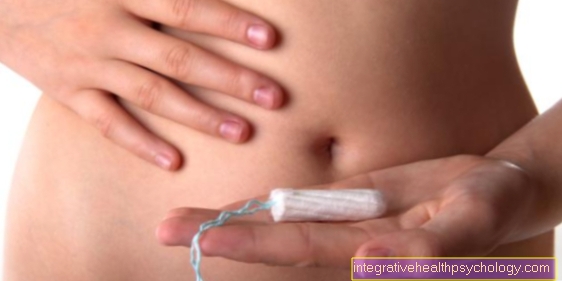




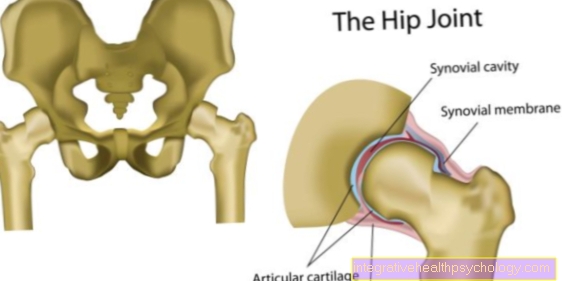




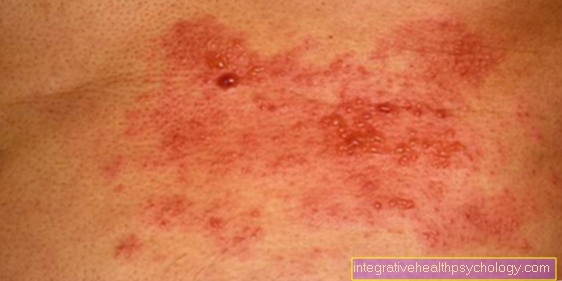
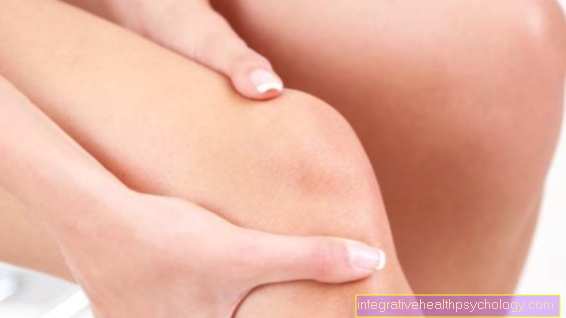

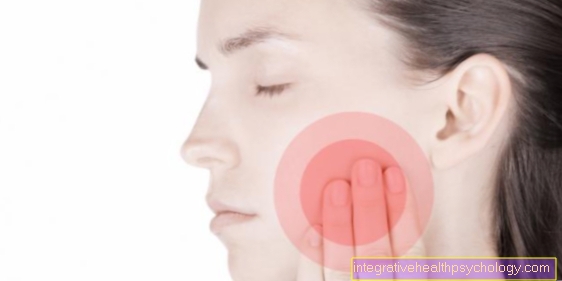


.jpg)

